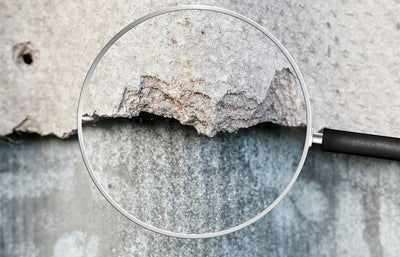New Asbestos Ban Could Increase Use and Release of PFAS Chemicals
RSS
Analies Dyjak, M.A. | Head of Policy and Perspectives
EPA recently proposed a ban on a certain type of Asbestos that’s still being imported into the U.S. today. Experts and regulators worry that this ban will increase the use of a different toxic chemical that’s already of concern in all 50 states.
Why Is Asbestos Allowed in the United States?
If you thought Asbestos was already a banned substance in the U.S., you’re not alone! EPA has been gradually phasing out asbestos since 1975, and the current proposal would officially close this chapter for good. Still, it’s estimated that there are over 40,000 asbestos-related deaths in the United States annually. Chrysotile Asbestos, also known as “white” asbestos, accounts for the majority of cases of mesothelioma and asbestos disease in the U.S. Patients with these types of diseases are often exposed via inhalation in a work setting, but contaminated drinking water is a known pathway of exposure. While the U.S. is working to ban Asbestos entirely, production and use is actually increasing in certain developing countries because of its low cost and effectiveness.
What Is Chrysotile Asbestos?
Chrysotile Asbestos is best known for its heat resistant properties, making it an ideal material for fireproofing various products. It’s also found in things like asphalt, brake pads, plastics, chlorine diaphragms, and roofing materials. Chrysotile Asbestos is used by one-third of chlor-alkali manufacturers, which are responsible for producing chlorine. Chlorine is used to produce 88% of all pharmaceuticals processed in the U.S., not to mention its widespread use in tap water disinfection. All types of Asbestos can enter the environment during manufacturing, building demolition/construction, and mining operations. Under this proposed rule, EPA would prohibit the manufacturing, processing, distribution in commerce, commercial usage, and importation of Chrysotile Asbestos.
Why Will Banning Asbestos Increase the Presence of PFAS?
Products that still use Asbestos rely on the material for its heat-resistant properties, as previously mentioned. Manufacturers, and even EPA, acknowledge that the replacement substance will likely be PFAS chemicals. Experts note that PFAS are not a suitable alternative for Chrysotile Asbestos because of the long list of dangerous health effects associated with these contaminants, including cancer. EPA acknowledges that: “the transition away from asbestos-containing diaphragms could result in great usage and release of PFAS.” Many states have created their own regulations and in some cases have banned the use of PFAS chemicals because of their toxicity. EPA and other federal agencies are focusing their efforts on regulating two different PFAS variations: PFOA and PFOS. While scientists have a good understanding of these two types, there are more than 9,000 different PFAS variations up for grabs to replace Chrysotile Asbestos.
Should We NOT Ban Chrysotile Asbestos?
We should ban all types of Asbestos known to cause negative health impacts, and any other contaminants known to be toxic for that matter. However, the regulatory process can take decades, and action is often taken well after people become sick and die. For example, the public has known about the risks of asbestos exposure since 1906, when the first reported death was documented. It’s taken over a century to ban a substance we’ve known to be incredibly toxic for over 100 years. By allowing PFAS to replace Chrysotile Asbestos, we’re knowingly replacing one toxic substance with another.
Other Articles We Think You Might Enjoy:Over 60% of Toxic Wastewater Biosolids Are Used To Fertilize Farmland in the U.S.
Things You Should Avoid Pouring Down The Drain:
Don't Drink or Cook With Water From The Hot Side of Your Faucet




